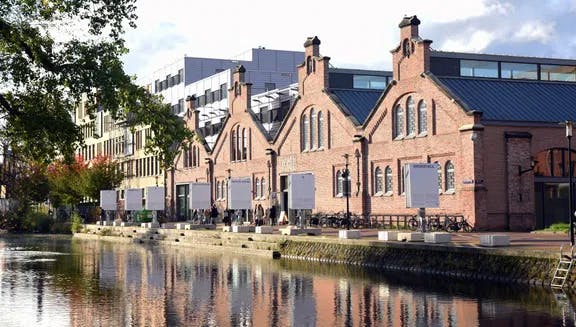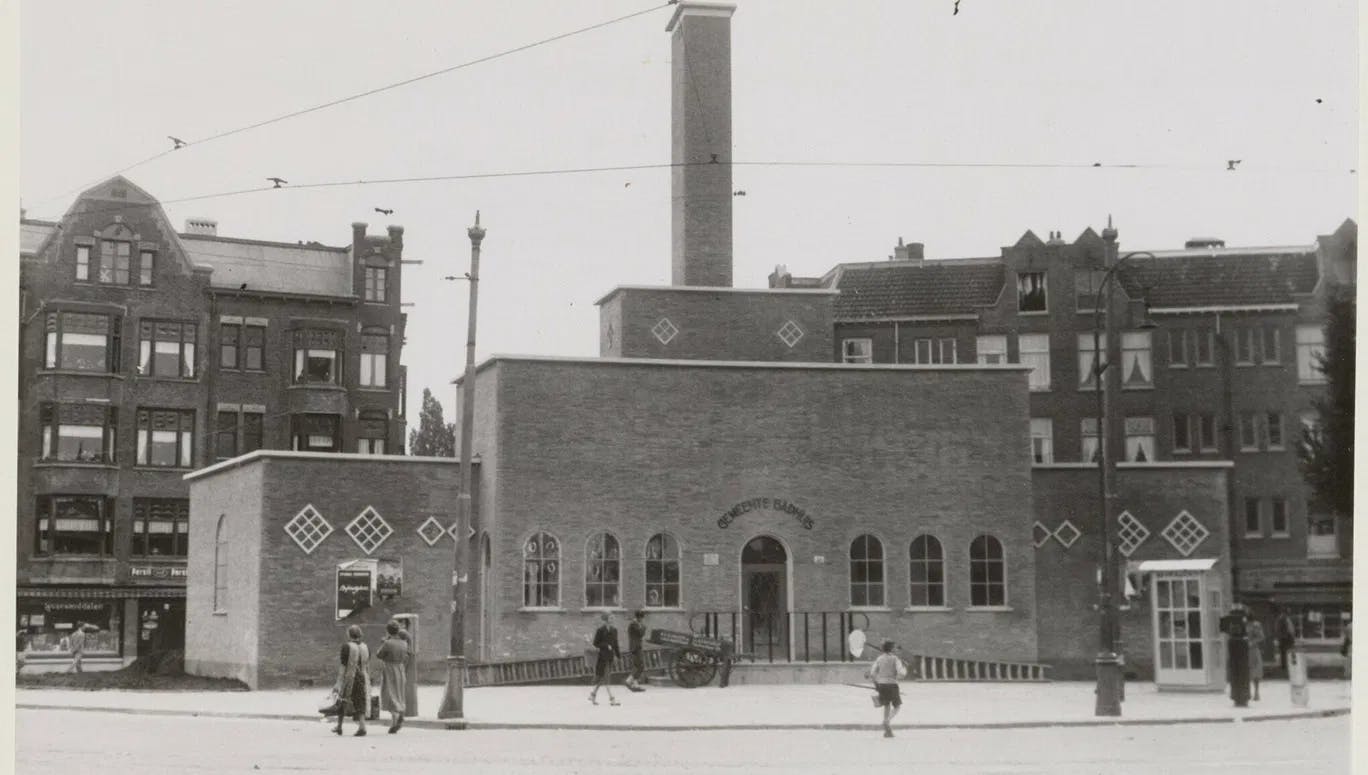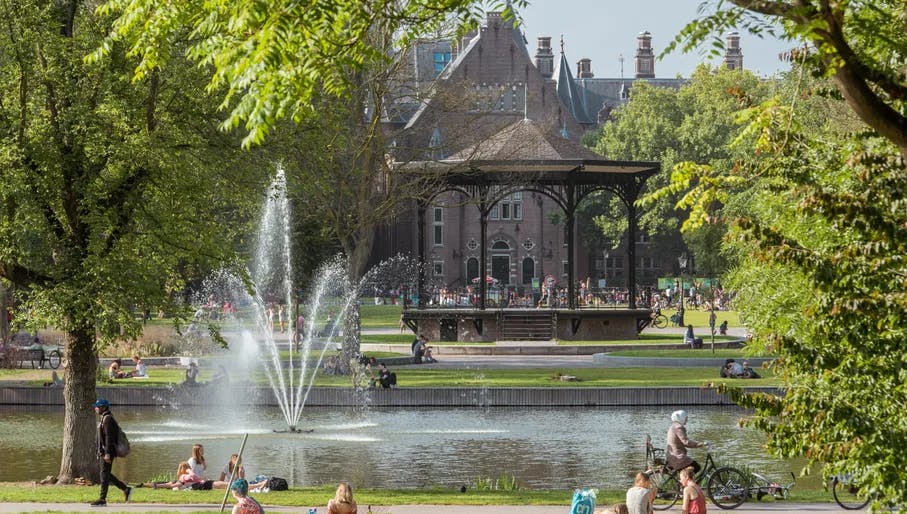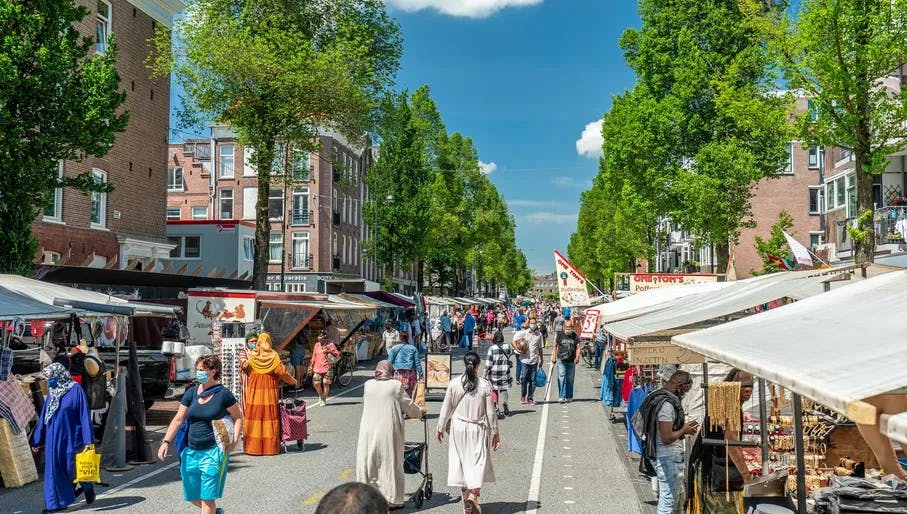
Art and culture in Oost
6 December 2025



Like much of Amsterdam, Oost was once little more than a patchwork of farmland. Shaped by the Watergraafsmeer polder to the east and dotted with grand country estates (Huize Frankendael standing as the last proud survivor), Oost transformed dramatically in the 19th century. Elegant townhouses sprang up around Oosterpark, the green heart of Oost, designed in the English landscape style by famed architect Leonard Springer. It was soon accompanied by the imposing Wereldmuseum (then called the Tropenmuseum), which provides a kaleidoscopic look into the cultures and traditions of the Netherlands’ former colonies, and the lasting impact of the country's colonial history.
Districts like the Dapperbuurt and the Indischebuurt, located east of lush Oosterpark, developed amid rapid urban growth, in response to growing industry and an increased demand for affordable housing. Companies like the Nederlandsche Stoomboot Maatschappij (Dutch Steamboat Company) shaped the city’s steadily growing industries and brought waves of migrants to live and work in the capital. Hailing from rural Dutch provinces and from all over the world – like the Caribbean, Suriname, and later Turkey and Morocco – Oost’s newest inhabitants brought fresh perspectives and influences that fundamentally reshaped the area’s social landscape. From halal butchers and communal teahouses to Surinamese and Indonesian tokos (Indonesian word for ‘shop’ that has woven its way into everyday Dutch usage), the streets of Oost have a culturally-rich feel that endures today.



Over the years, the face of Oost has continued to change rapidly. Wander along the streets in the Oosterparkbuurt and the Dapperbuurt, and you’ll find a wealth of hip new restaurants and bars sidled up beside more down-to-earth local venues. The refined fare offered by Buurtcafe de Tros and its neighbour, turbo, paints a picture of an upscale and modernised Oost: polished but still packed with character. New favourites like the queer-run vegetarian Dapper café, which serves bread from local sourdough bakery Olaf Brood, are also part of the neighbourhood’s ever-evolving face. Further east, in the Indischebuurt, you’ll find the former bath house on Javaplein, the square that serves as the area’s beating heart, now re-opened as Badhuis, a restaurant serving quality day-to-night eats with a diverse events calendar to keep that local feel.
But Oost’s unique character lies in its laid-back eateries and age-old cultural hotspots. Though it has its fair share of trendy new venues, the neighbourhood’s old-school haunts still reign supreme: for Surinamese fare, try out true Oost institution Ricardo’s, or pop into local toko Man Li Ho for a quick bite. Nothing beats the fresh fruit and veg at the grocers along the Javastraat, accompanied by a sweet treat from one of the neighbourhood’s beloved Turkish bakeries (Kardas is a true highlight). Classic no-frills brown cafés, like the famed Ruk and Pluk, still adorn Oost’s streets, and the Dappermarkt, Amsterdam’s oldest street market, comes alive Monday-Saturday, drawing both locals and visitors who mix and mingle along its main artery. For your cultural fix, try Studio/K, a student-run arthouse cinema, and the elegant Wereldmuseum, with its revolving program of exhibitions that range from the poetry of West Africa to a deep dive into the history of Dutch colonialism. A little further along, in quaint Watergraafsmeer, is where you’ll find quirky museum Tot Zover (The Funeral Museum) with its unusual yet moving exploration of what it means to live and die. Whichever part of Oost you explore or call home, a cosmopolitan feel meets local grass-roots charm in this many-sided neighbourhood.